Beyond the Surface: the Art of Echizen Lacquerware
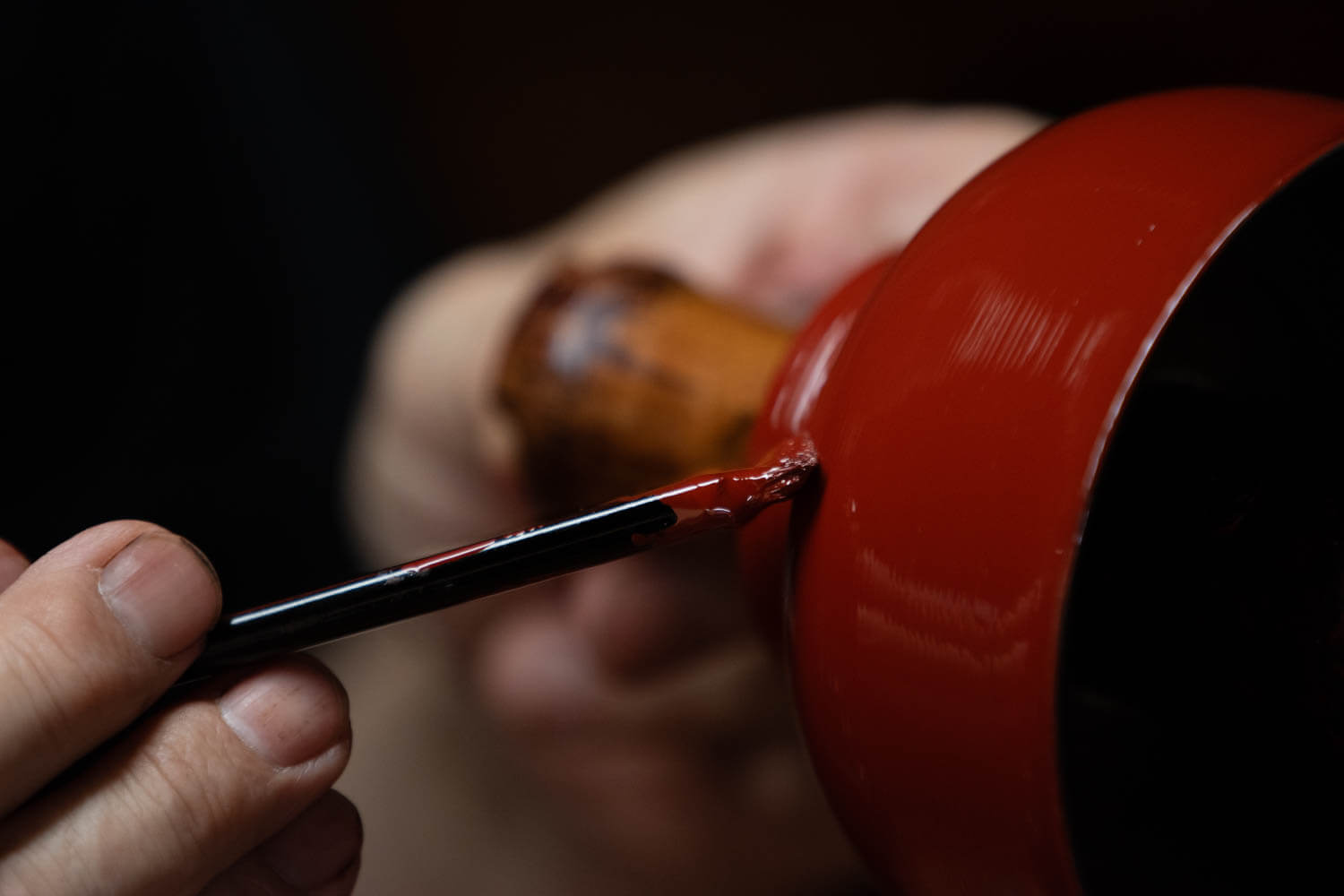
Nestled within the Kawada area lies the birthplace of an ancient art form — Sabae, Fukui Prefecture, the homeland of Echizen lacquerware. Known for its gentle yet luxurious luster, this craft boasts a history of more than 1,500 years and now comes in all shapes and functions. From elaborate bento boxes to minimalist coffee cups, artisan aficionados worldwide have been enchanted by the quiet elegance of Echizen lacquerware. At Kyomi, we beckon you to step into the realm of this mesmerizing craft!
Table of Contents
1. History
2. Sculpting Raw Wood into Form and Function
3. The Meticulous Art of Polishing and Sanding
4. Building Layers of Tradition and Hue
5. Precision and Patience in Applying Intermediate Lacquer
6. The Critical Eye for Flawless Finish
7. Layers of Lacquer and History in Harmony
8. Drying Chambers and the Final Touches
History
Men who appreciate the art of writing and intellectual expression can find no better choice than Maki-e fountain pens. These high-quality stationery items are more than just universally appropriate gifts — practical yet aesthetically unique, the detail in each pen perfectly encapsulates Japan’s rich cultural heritage and appreciation for craftsmanship. Yamada Heiando’s fountain pens, for instance, utilize their traditional Japanese lacquerware technique to add a touch of elegance to its welder’s intellectual expression, subtly communicating his sophistication and appreciation for artistry. They’ve also collaborated with Sailor to produce “Naginata Togi '' style pen nibs, famous for their smooth writability. If you’re looking for Japanese gifts for men that would be perfect for any occasion, look no further. You’ve found it.
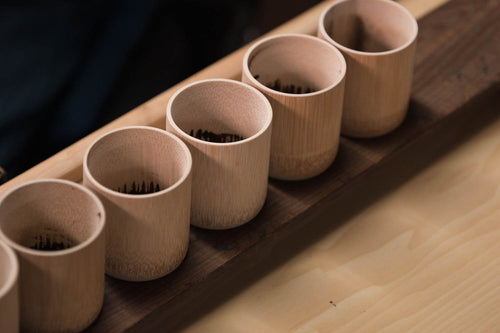
Sculpting Raw Wood into Form and Function
The woodworkers carve the bowls with specialized techniques, then reinforce and cut away at their surfaces to remove any imperfections. Most products are crafted from robust woods like Japanese horse chestnut, cherry birch, or zelkova. For artisans like Shoichi Hatakenata, a celebrated first-generation Sabae craftsman, bamboo is occasionally chosen, though it requires the application of a notably sophisticated technique.
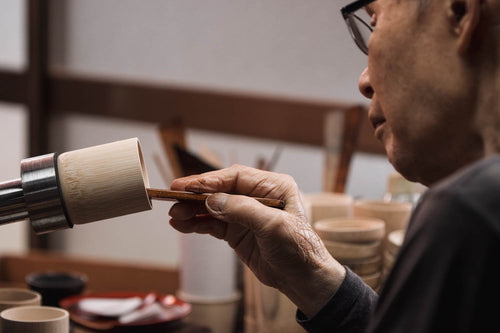
The Meticulous Art of Polishing and Sanding
In the lacquer-painting workshop, each wooden bowl undergoes thorough polishing and sanding to achieve a flawlessly smooth finish. During this process, the craftsmen utilize motorized equipment to rotate the bowls, some of them manufactured nearly two decades ago. These tools are operated using foot pedals: one secures the bowl with a suction mechanism, while the other adjusts the rotation speed. This method demands a level of hand-eye coordination reminiscent of driving a car.
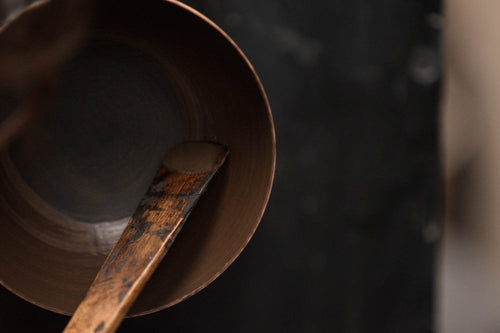
Building Layers of Tradition and Hue
Each piece is treated with three successive rounds of lacquer painting. Initially, in the Kigatame process, a foundational coat of raw lacquer is applied to accentuate the grain and refine the surface. Subsequently, the Shitaji technique introduces a lacquer paste onto the piece, serving as a primer that darkens the wood's hue.
The brushes employed for lacquer paints are specially crafted to ensure both precision and a smooth application. Depending on the desired outcome, the brush's tip is fashioned either from horsehair or human hair. Brushes with human hair yield a sleek, even lacquer layer, while those made of horsehair introduce deliberate lines onto a bowl's surface. Like a pencil, the brush's bristles shorten over time, requiring the artisan to sculpt and shape them regularly. Although the brush's design was conceived roughly a century ago, spanning the Edo and Meiji eras, only two establishments in Aizuwakamatsu produce them today.
Allow us to share a tale about Izumibake, the founder of one such establishment. As a young university student in Tokyo, she had a chance encounter with a lacquerware brush that instantly captivated her and sparked an immediate change in her career. After undergoing a brush-making apprenticeship with a master craftsman, she returned to her hometown to establish her company. Her skill caught the attention of Fukui's lacquerware artisans, who journeyed to personally appraise her brushes. Recognizing their unparalleled quality, Izumibake eventually emerged as one of the two esteemed suppliers of Sabae's lacquerware brushes.
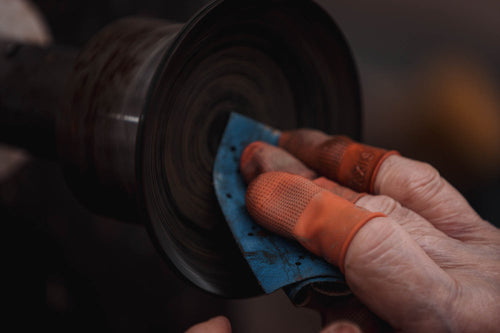
Precision and Patience in Applying Intermediate Lacquer
This is where the middle layer of lacquer is applied. In the process of Naka-nuri, the bowl is once again sanded down and lacquer paint is applied onto the smoothen surface. This painting process is repeated a few times, punctuated by pockets of time where each layer is allowed to dry. Depending on the day’s weather and humidity, the craftsmen must adjust the drying times accordingly to ensure consistent results. It is also vital that no dust gets between the layers of lacquer paint as this would affect the overall look of the product.
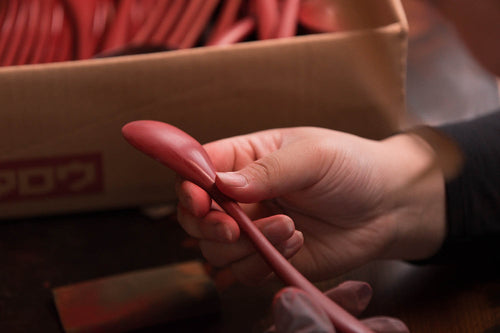
The Critical Eye for Flawless Finish
To ensure that all the lacquerware products are of the finest quality, the surface of each piece is carefully inspected before the final layer of paint is applied.
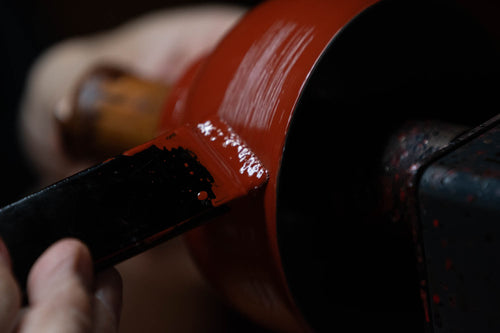
Layers of Lacquer and History in Harmony
In the process of Uwa nuri, the final layer of lacquer paint is carefully applied. This is followed by coating a transparent layer of lacquer gloss over the surface of the piece to protect the paint and provide Echizen lacquerware’s signature glean.
As the esteemed second-generation artisan Shinya Hatakenaka informed us, the lacquer paint is often a combination of egg white and Bengara Urushi, a mixture of oxygenated iron powder and translucent Urushi lacquer. This unique blend gives Echizen lacquerware its signature Kodaishu color, which translates literally to “ancient vermillion”. As if beckoning you to listen to its story, the richness of the color has an evocative, mesmerizing quality, hinting at the centuries of history echoing within its scarlet swirls.
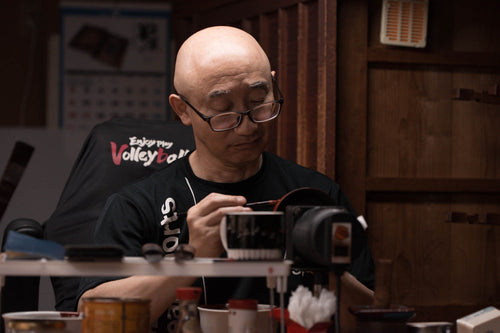
Drying Chambers and the Final Touches
Finally, the bowl undergoes a drying process in a specialized drying chamber. This chamber, equipped with a perpetually rotating wheel of spokes, ensures that the bowls are methodically turned for an even application of the lacquer layers.
Interestingly, humidity is essential for the lacquer drying process. Moisture is pivotal to initiating the chemical reaction that solidifies the lacquer. To sustain the requisite humidity, a water-soaked cloth is hung up in front of the drying chamber. In certain instances, soy sauce might even be mixed into the lacquer paint to expedite the drying.
Apart from lacquerware production, Sabae’s craftsmen are deeply involved in lacquer repair and restoration. Therein lies the beauty of lacquerware — despite its luxurious appearance, lacquer is durable and water-resistant, rendering it a practical material for everyday items. Even if it is chipped or broken, a lacquerware product can be completely restored to its original condition. During the Edo Period (1603 - 1868), there were even craftsmen who would exclusively specialize in repairing lacquerware. Today, Sabae’s craftsmen may receive special requests to repair a customer’s lacquerware product, and they’ve consistently revived these pieces back to their pristine state.
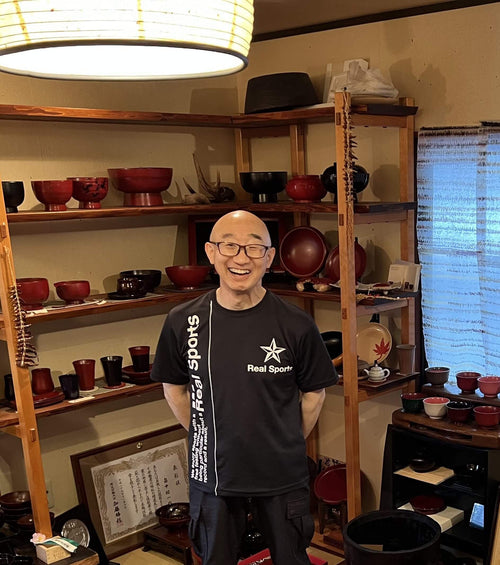
Harmony in Heritage
In conclusion, the intricacy of Echizen lacquerware’s production process is a testament to their success in blending ancient tradition and modern innovation. Forged in the heart of Sabae, this art form has not only endured but flourished, meeting contemporary demands while preserving its rich heritage. There is a school of thought that suggests products originating from distant shores carry a 'cultural odor' — a lingering breath of their homeland, elevating mere consumption to a cultural encounter. However, as our journey with Echizen lacquerware unfolds, I believe this art form tells a more nuanced tale. Its allure lies not just in the exotic, but in the resonance of the universal song it sings. The craftsmen, their hands bearing stories of generations, fondly call their creations 'warm'. To hold one of their bowls is to feel the heartbeat of families of artisans, each lacquered layer a glistening testimony to their aspirations and years of toil. It’s an invitation to their hushed conversation about legacy, time's passage, and the indelible mark of art in our existence. It’s an acknowledgment of our innate desire to protect what is precious — a connection to that human spark that compels us to murmur:
"Ah, that’s beautiful."
Ready to explore our wide range of products? Visit our catalog page now and discover the perfect items for your needs!
